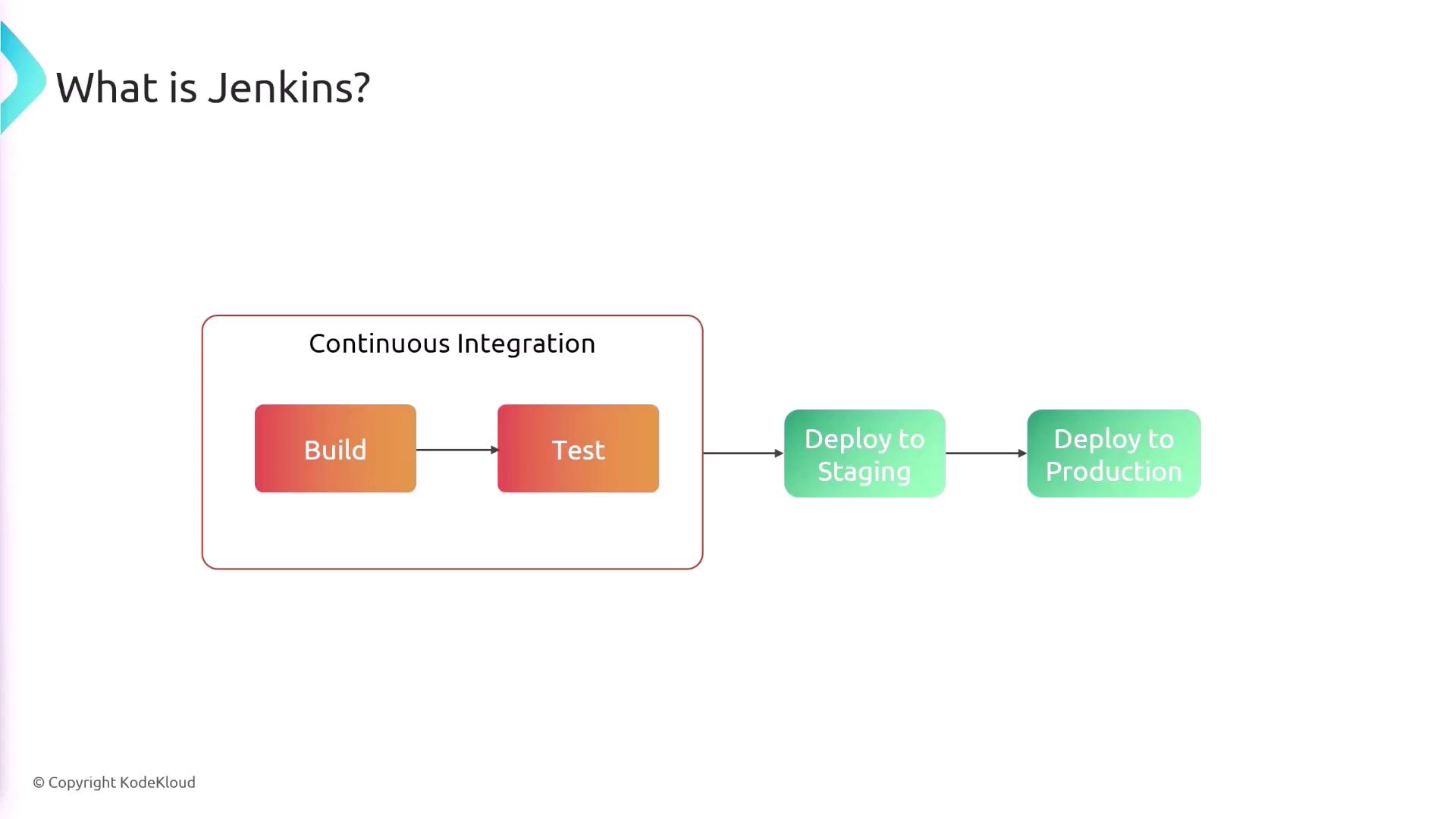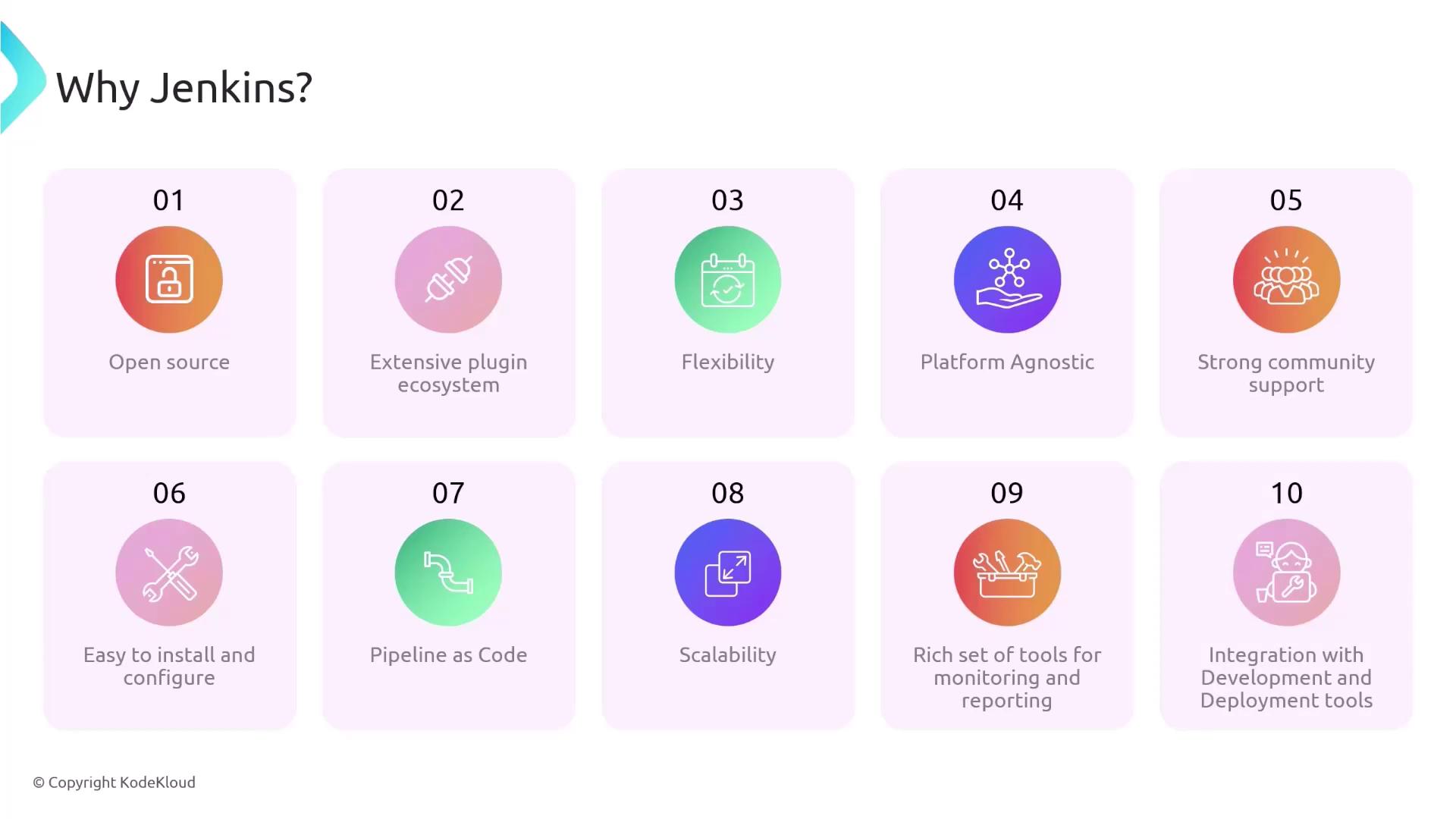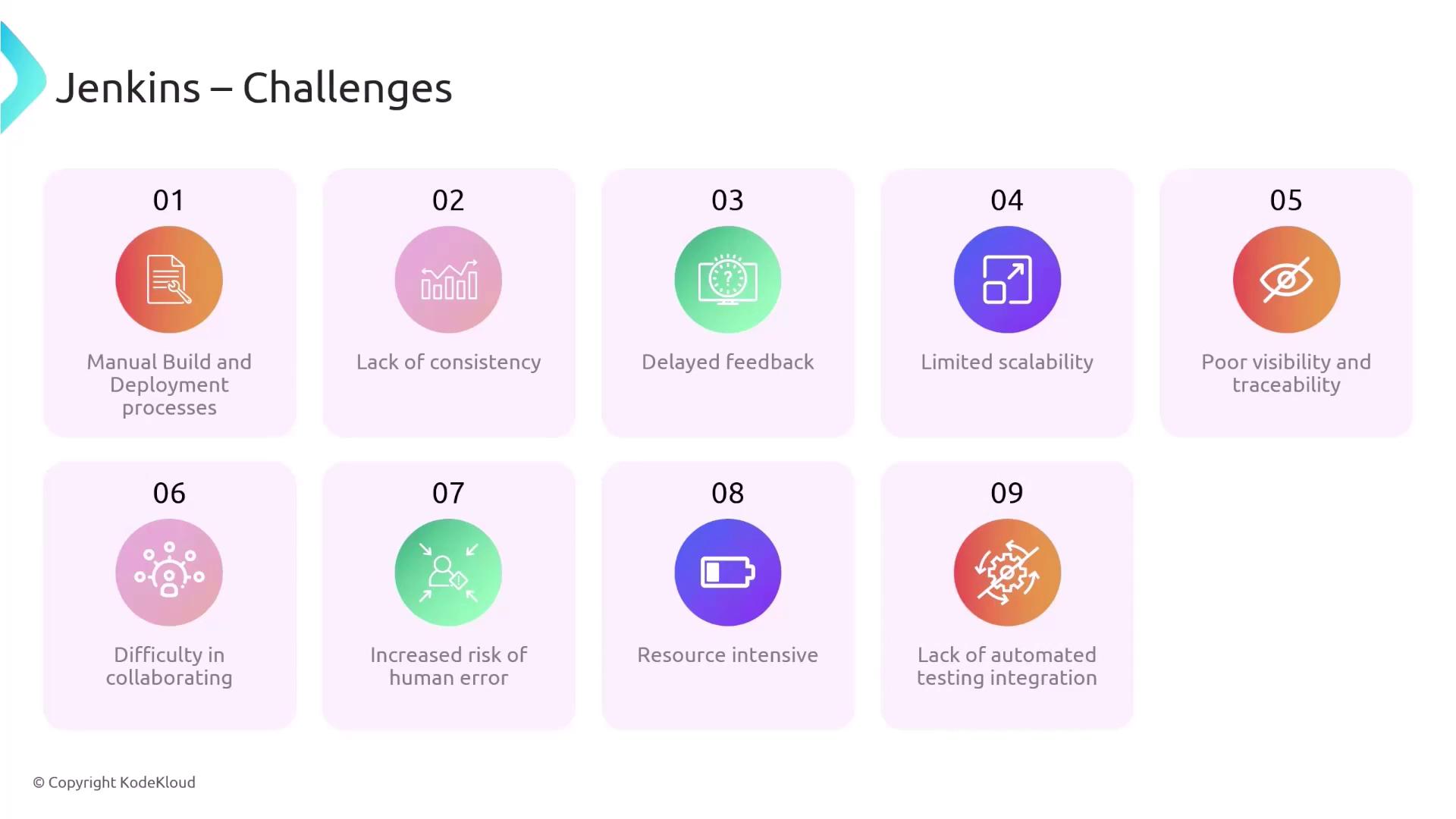Jenkins Project: Building CI/CD Pipeline for Scalable Web Applications
Jenkins
What is Jenkins Why do we need Jenkins
In this lesson, we explore Jenkins—a leading open source tool designed for continuous integration and continuous delivery (CI/CD). Jenkins automates building, testing, and deploying your code, streamlining integration and delivery processes. Whether you're integrating new features, deploying updates, or running automated tests, Jenkins plays a pivotal role in ensuring that your software remains reliable and up-to-date.
Imagine pushing your code to GitHub, where Jenkins automatically detects changes. It then builds the code, executes tests, and even performs code formatting or linting. This automated process helps maintain high quality standards before deployment. For example:

Once the build and test phases are complete, Jenkins can deploy your application to platforms such as Docker, Kubernetes, or various cloud providers through its extensive integrations. By handling repetitive tasks, Jenkins allows your team to focus on coding, leaving the details of the CI/CD pipeline to automation.
How Jenkins Works
The Jenkins workflow typically begins when a developer commits code to a Git repository. This commit triggers a build in Jenkins, which then follows a series of preset steps, including:
- Linting and formatting the code
- Running unit and integration tests
- Building and packaging the application
If any step fails, Jenkins promptly notifies the team with detailed feedback, enabling developers to address issues and recommit their code swiftly. This rapid feedback loop ensures that the software remains in a deployable state. Consider this diagram for an overview of the process:

Jenkins automates the entire CI/CD pipeline by executing each stage defined in your version-controlled pipeline configuration (commonly using a Jenkinsfile). This approach helps maintain consistency and traceability across all environments.
Advantages of Using Jenkins
Jenkins has become a popular CI/CD solution not only because it is open source and free, but also because of its numerous advantages:
- Extensive Plugin Ecosystem: Enhance functionality by integrating with various source control systems, deployment platforms, and testing tools.
- Flexibility and Customization: Configure Jenkins to support nearly any CI/CD workflow, making it adaptable to projects of various sizes and complexities.
- Cross-Platform Compatibility: Work effortlessly across different operating systems—Windows, macOS, and Linux—and deploy it on-premises or in the cloud.
- Community Support: Benefit from a large, active community that frequently updates Jenkins with security patches and improvements.
- Pipeline as Code: Maintain your CI/CD pipeline in code (via a Jenkinsfile) to ensure consistency and enable version control tracking.
- Scalability: Distribute builds across multiple machines to reduce build and test times significantly.
- Detailed Reporting and Logging: Monitor build statuses, test outcomes, and deployment logs, enhancing visibility and simplifying troubleshooting.
Did You Know?
By automating repetitive tasks, Jenkins not only boosts productivity but also minimizes errors that often arise in manual build and deployment processes.
Addressing Development Challenges with Jenkins
Manual build and deployment processes can be tedious, inconsistent, and error-prone. Without automation, teams face challenges such as:
- Tedious manual steps that risk human error
- Environment inconsistencies between development and production
- Delayed detection of integration issues
- Limited visibility into build statuses and test results
- Fragmented collaboration across distributed teams
- Resource-intensive processes that strain time and computing power
The streamlined process offered by Jenkins addresses these challenges and drives efficiency throughout the development lifecycle.

Attention
Manual development processes can lead to delayed feedback and integration errors, making continuous integration with Jenkins essential for modern software development.
Overcoming Manual Process Pitfalls
Without Jenkins automation, teams would struggle with the following issues:
- Error-prone manual build and deployment procedures
- Inconsistent environments causing integration challenges
- Slow detection of issues due to infrequent code merges
- Poor visibility into the status of builds and deployments
- Challenges in collaborative teamwork and communication
- Increased risk of human-induced errors
The following diagram highlights the reasons to choose Jenkins as a CI/CD tool:

By automating key processes, Jenkins not only speeds up the development lifecycle but also ensures that workflows remain consistent and reliable.

In summary, Jenkins provides a robust and flexible solution that addresses many of the challenges associated with manual processes. By automating tasks from building to testing and deployment, Jenkins enables development teams to deliver software more efficiently and reliably.
For more details on Jenkins and CI/CD practices, consider exploring the Jenkins Documentation and Kubernetes Basics.
Watch Video
Watch video content